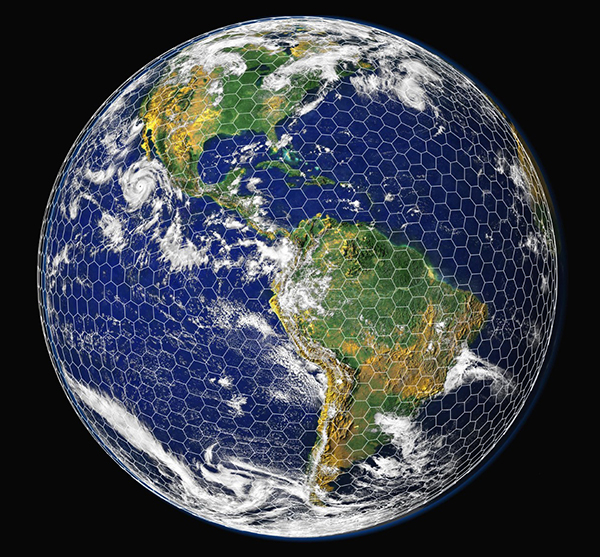Faculty, NCAR partner on $5M NSF project to bolster Earth system modeling capabilities
Colorado State University Atmospheric Science Professors David Randall and James Hurrell will collaborate with the National Center for Atmospheric Research (NCAR) to create a high-resolution version of an Earth system model used by scientists around the world. The National Science Foundation will fund the nearly $5 million, five-year “EarthWorks” project led by CSU.
The project will extensively modify a recent version of the Community Earth System Model (CESM), which is an open-source model used by many researchers to improve our understanding of the complex interplay of atmospheric, oceanic, land surface and sea ice processes that comprise the Earth system.
Though extremely useful and powerful for many science applications, such as investigating the impacts of a changing climate, the current model has limitations, including an inability to explicitly simulate thunderstorms and other relatively small-scale phenomena at its current low spatial resolution. Instead, storms, cloud formation and other similar processes are parameterized, or represented statistically.
While some Earth system models have sufficient resolution to simulate thunderstorms – called global storm-resolving models – none of them are freely available to the research community. EarthWorks aims to bring this global storm-resolving capability to their version of the community model, so all researchers can utilize it.
“The fact that this is a community model that’s shared openly with everybody is unique and very valuable,” said Randall, EarthWorks’ principal investigator and a University Distinguished Professor. “Our intention is that everyone will be able to use what we’re building.”
Read the full Source article, “Atmospheric science faculty partner with NCAR on $5M NSF project to bolster Earth system modeling capabilities.”
Image at top: This graphic shows a coarse version of the EarthWorks grid superimposed on an image of the Earth. The actual EarthWorks grid will be much finer than this, with grid spacing about 100 times smaller than what is shown here. Credit: William Skamarock/NCAR



